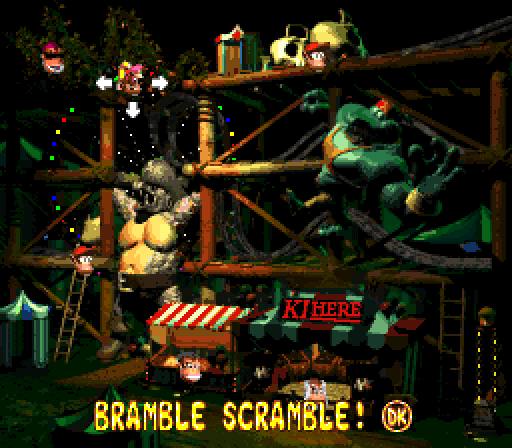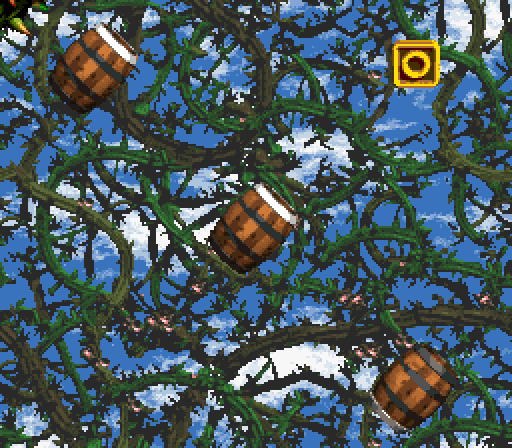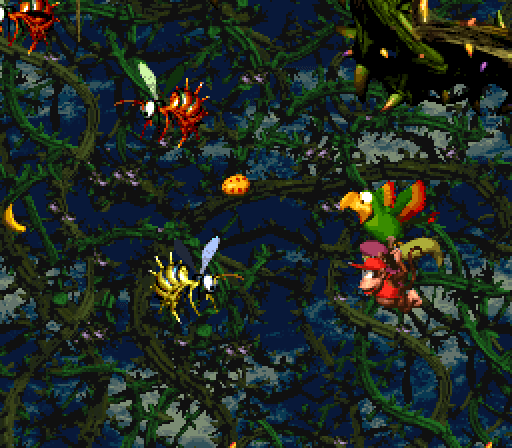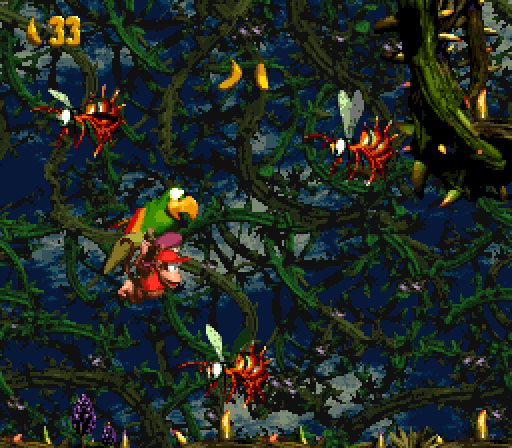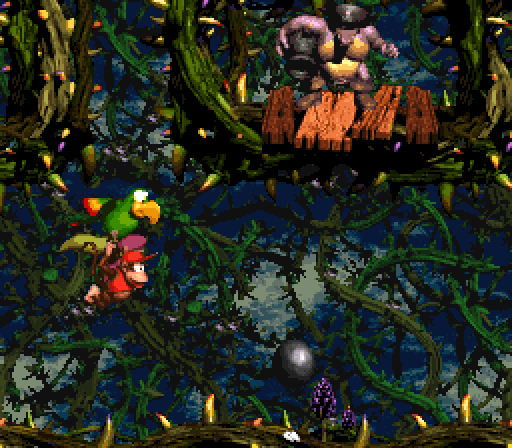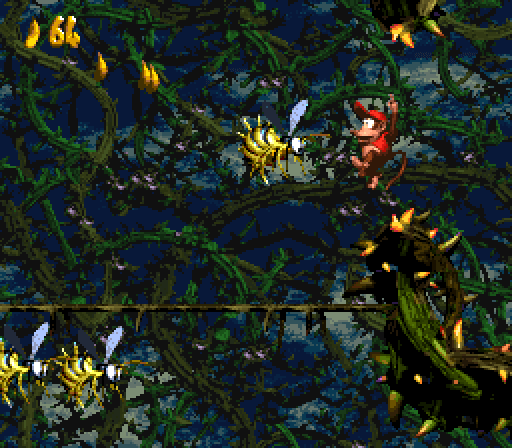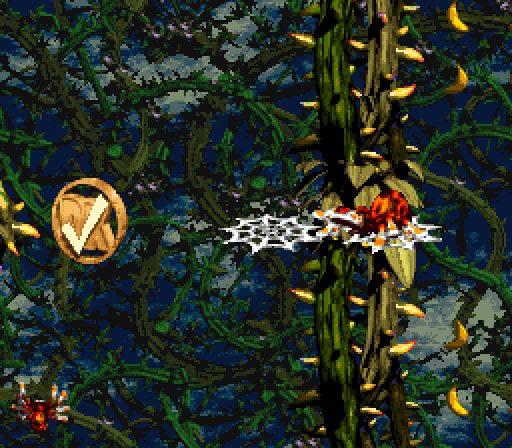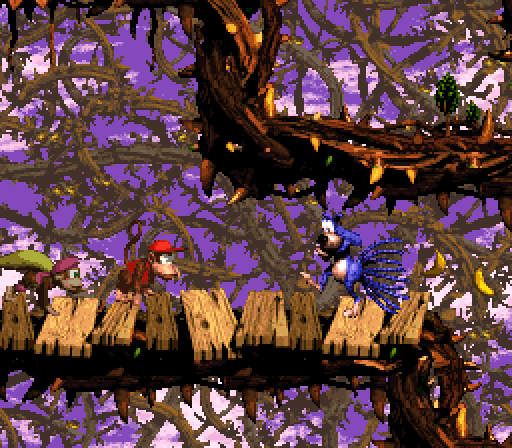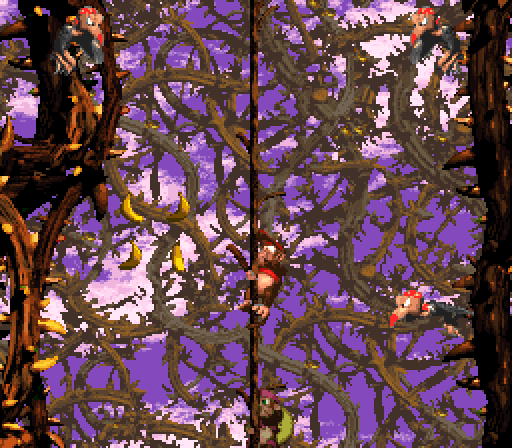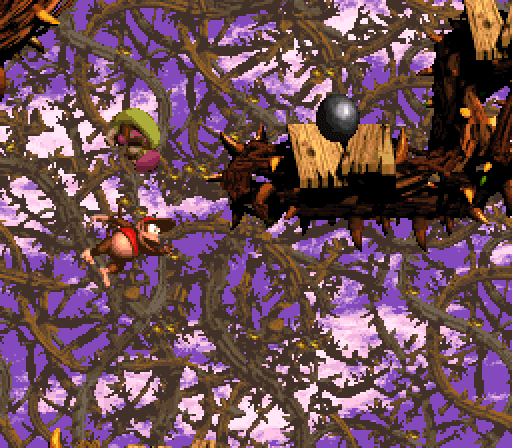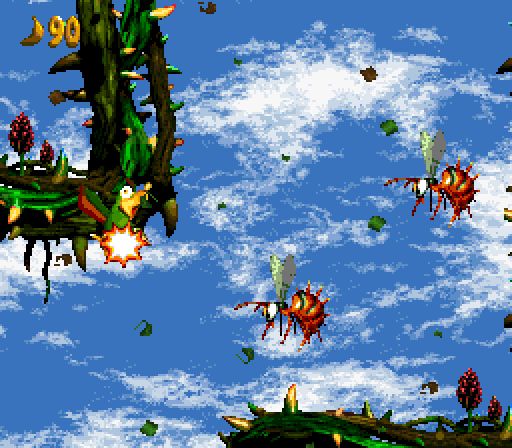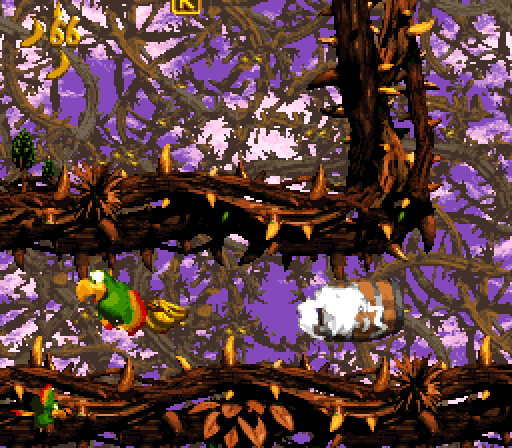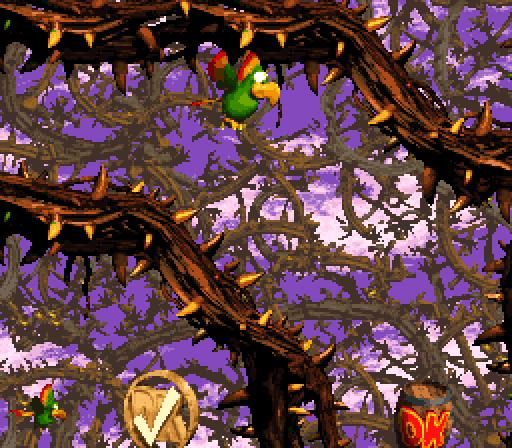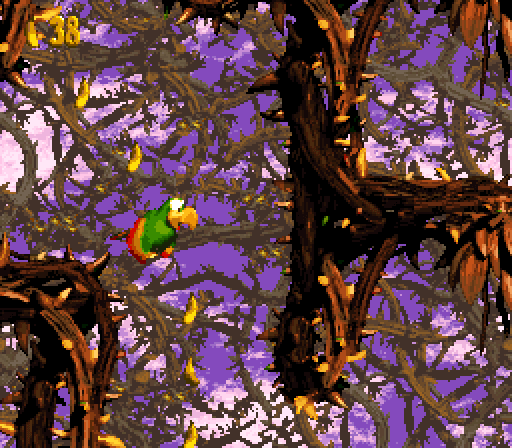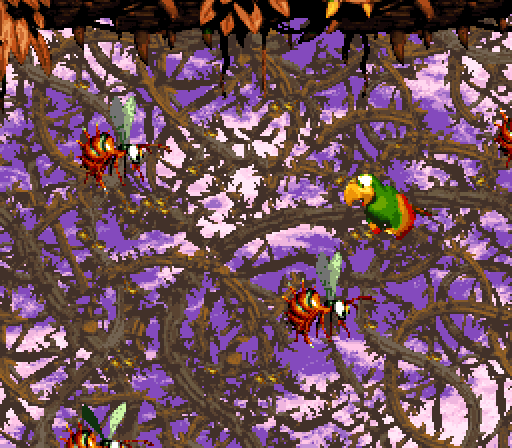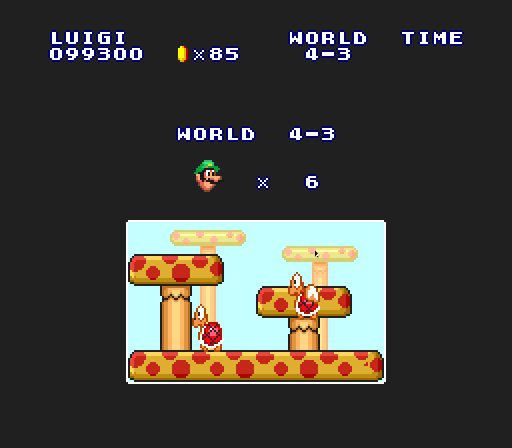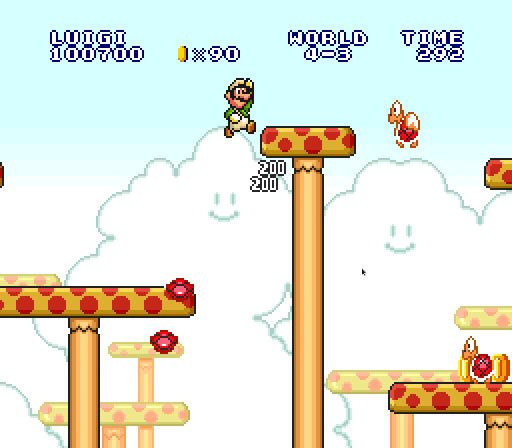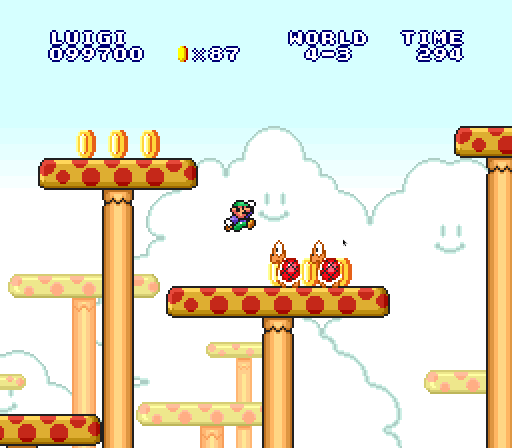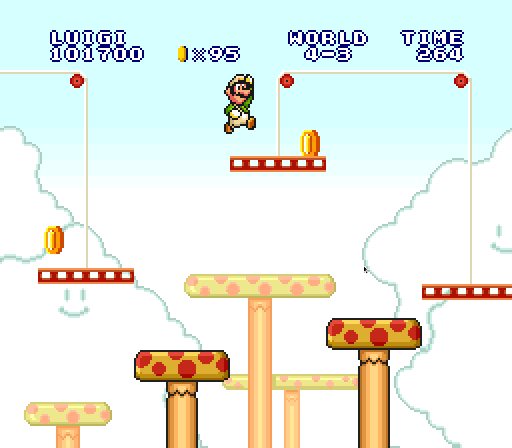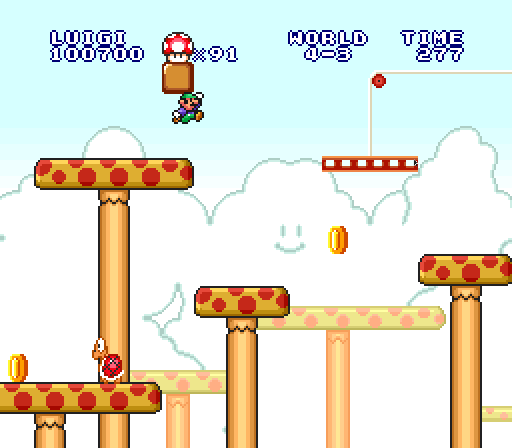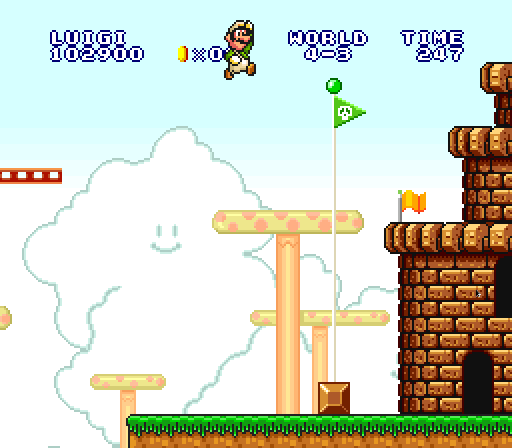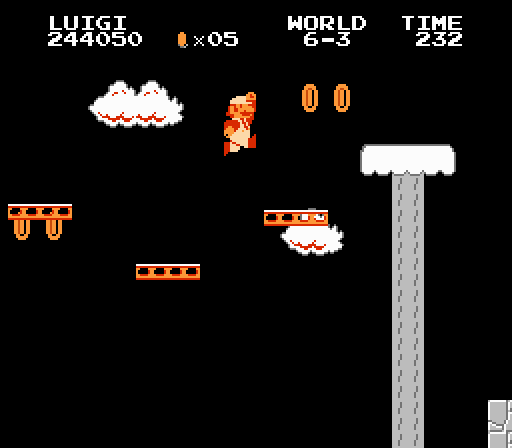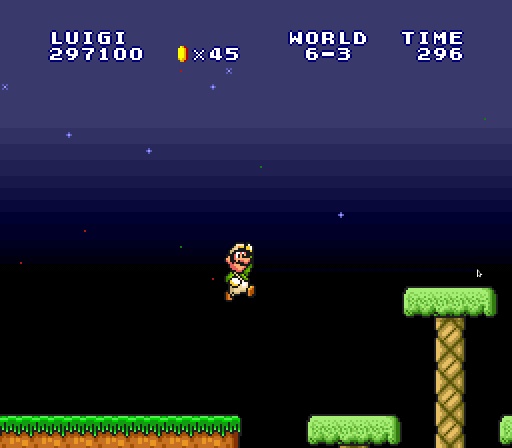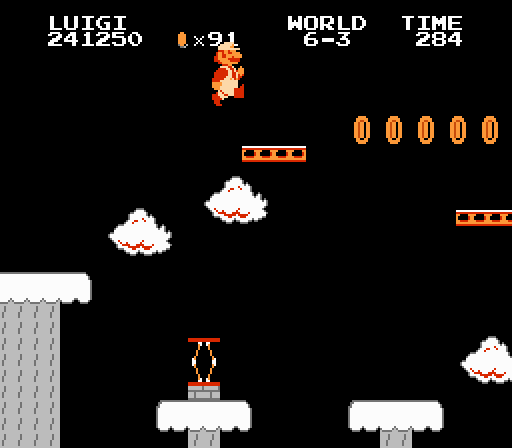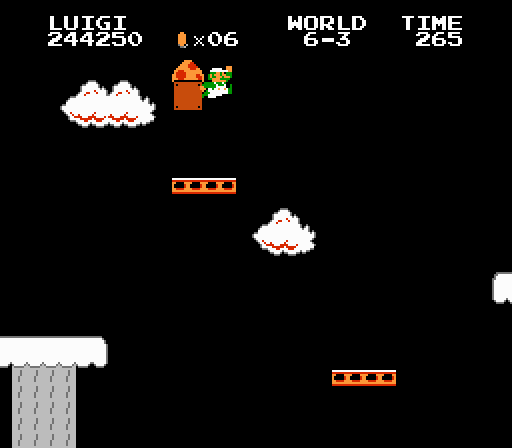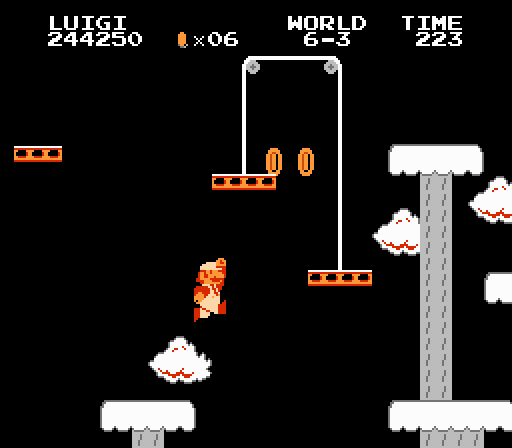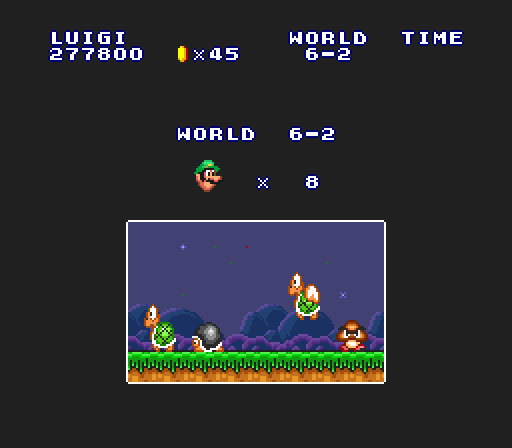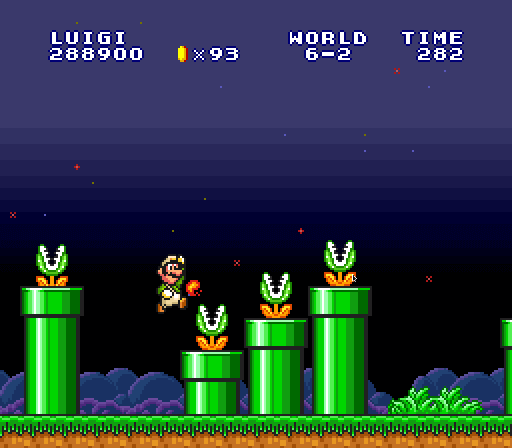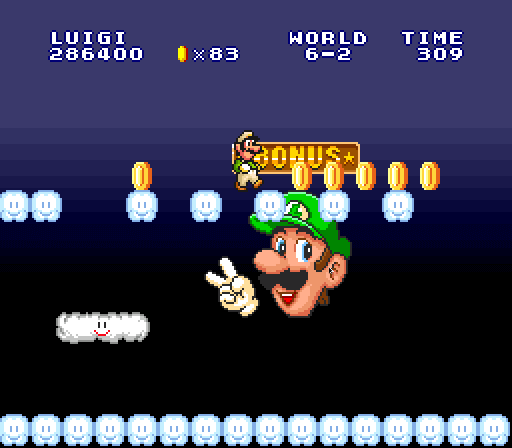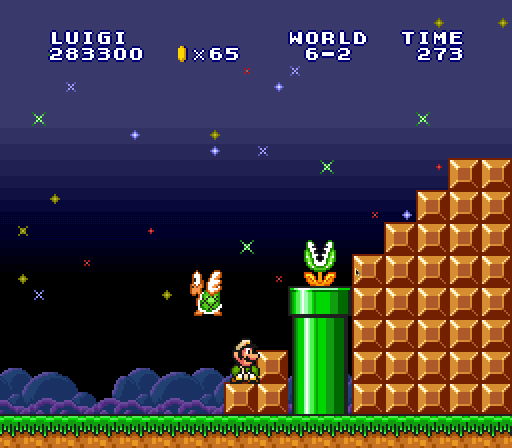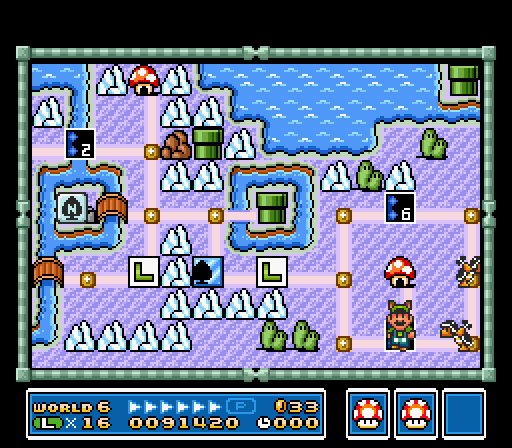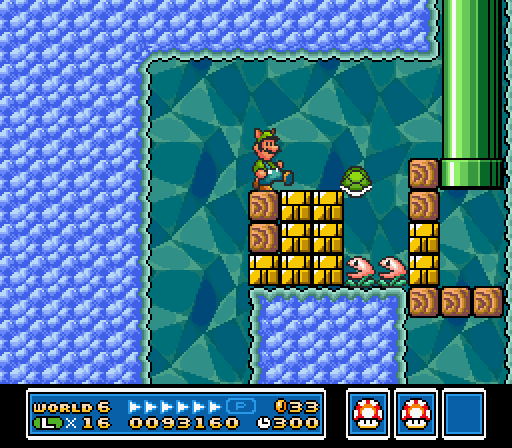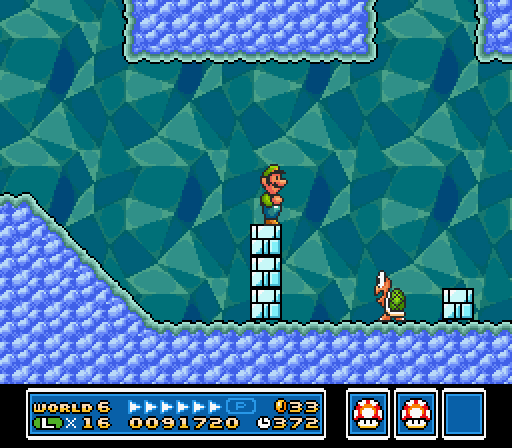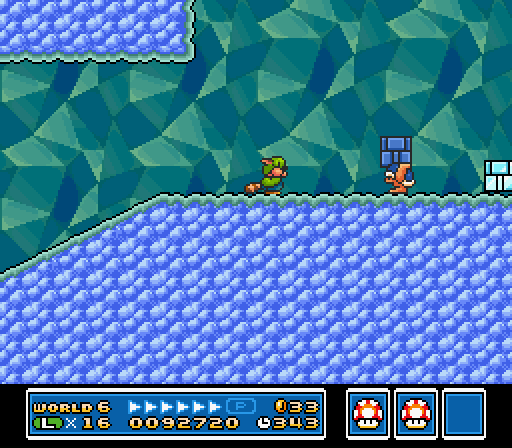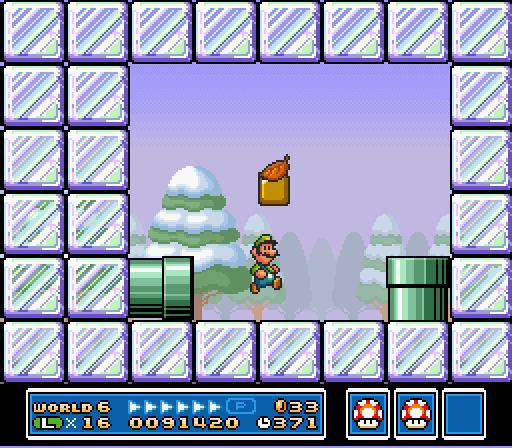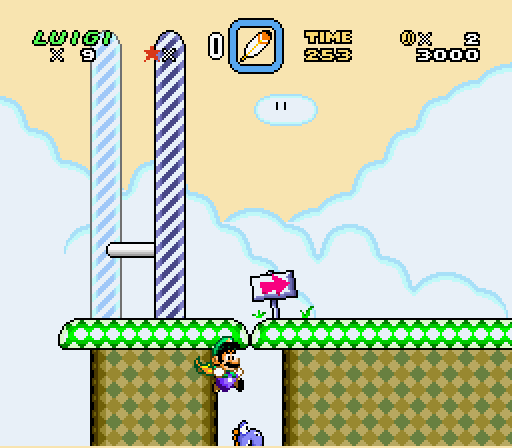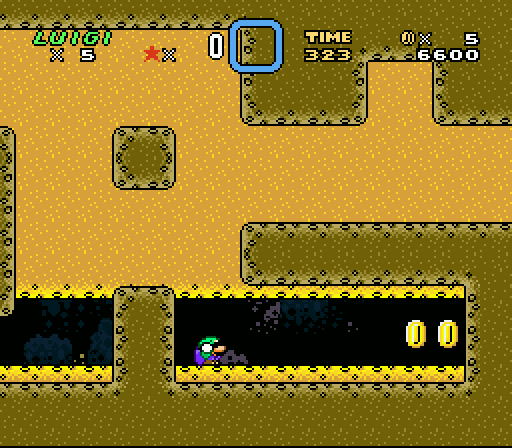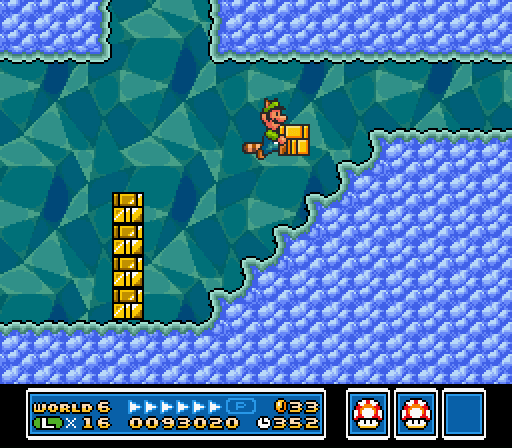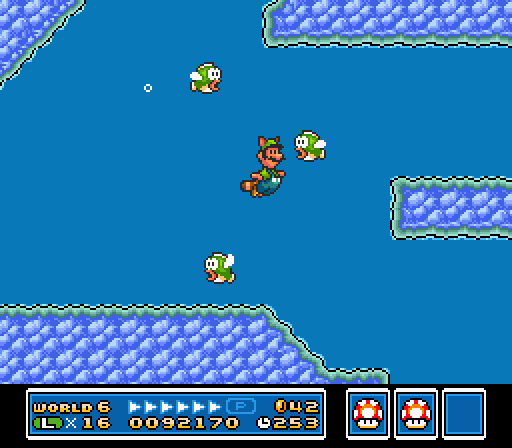Bobbing Barrel Brawl
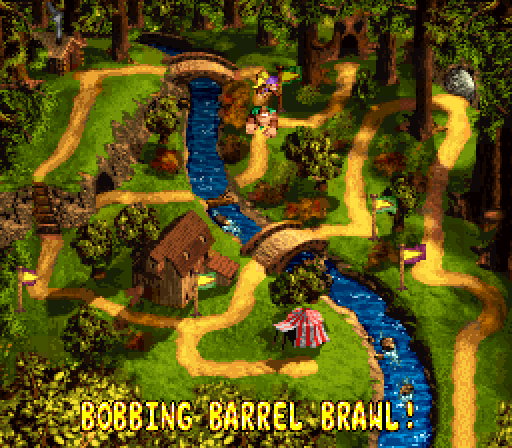
View an interactive map courtesy o’ DKC Atlas
It’s shocking to see an Ellie level so high up, but for once we have a level that focuses on her abilities ( & not just the ability to throw barrels, which the Kongs can already do themselves ) & not her weaknesses. E’en better, this level adds many variations to her shooting & sucking skills & breaks up this theme with basic platforming to keep this level from feeling 1-dimensional, making this level feel like it came out o’ DKC2. The only caveat is that this level does have mo’ stopping & waiting than a normal DKC2 level, Ellie’s sucking ability doesn’t have many variations, & Ellie’s shooting ability is just a weaker version o’ Squitter’s, since it requires you to stop & suck up water for fuel, which doesn’t add much to gameplay other than slowing you down.
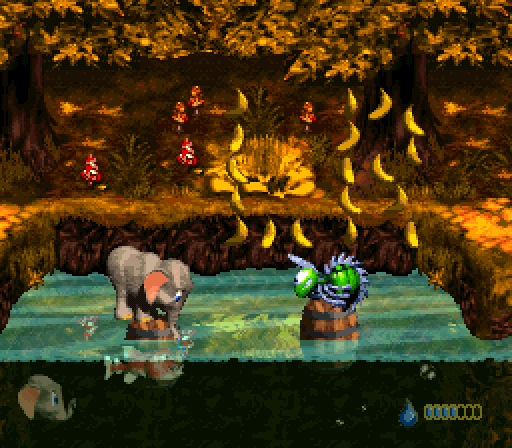
A few o’ the variations:
In addition to shooting forward, upward @ an angle, & jumping & shooting upward @ an angle, @ 1 point you need to shoot a Booty Bird to drop a TNT barrel onto a Zinger to unblock a bonus barrel.
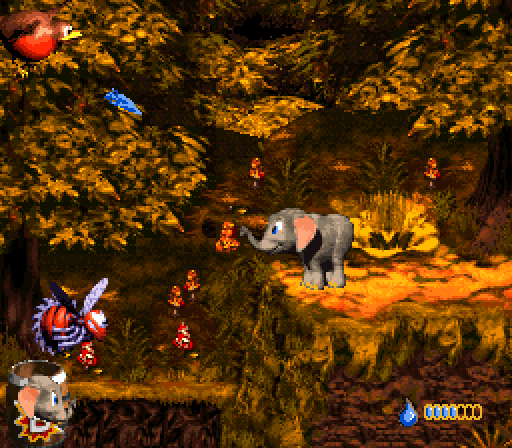
Suck up a steel barrel & shoot it thru a rather narrow hole to hit Koin.
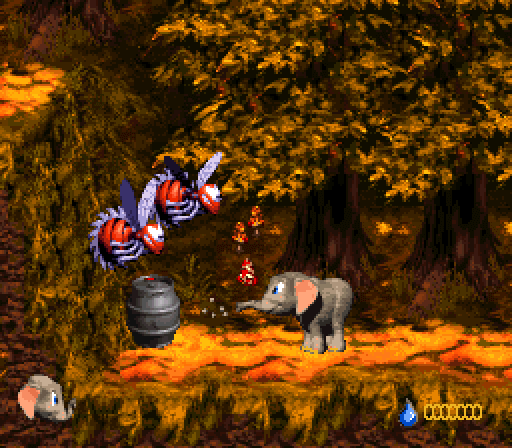
Jump up beetles to fall onto a lake o’ water with greater force & go deeper down to reach a bonus barrel lower down. ( Note: if this is too tricky to find, you can go back with the Kongs after losing Ellie & pair-throw someone up the 1 cliff in the way & then just swim down to the bonus barrel ).
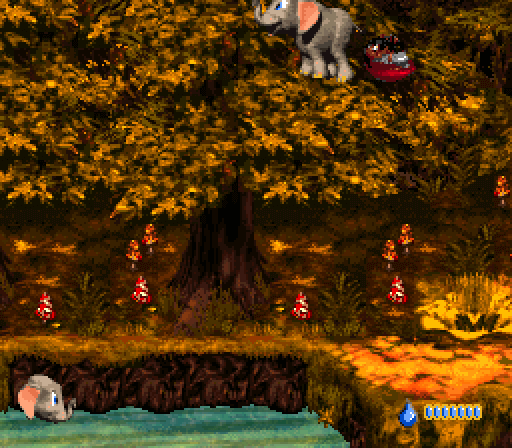
The bonus challenges are all right: the 1st is just a basic challenge dropping barrels into the water to cross to the bonus coin, which I guess is mo’ challenging ’cause you have a time limit, but still feels a bit redundant gainst the level itself. The 2nd challenge requires you to cross barrels o’er water while collecting ornaments, which are laid out in an arc, which is not a huge challenge, but does feel mo’ different from what the main level offers while still fitting the level’s theme & does offer something o’ a challenge, specially for a rather early level, in that you have to make sure you grab the ornaments.
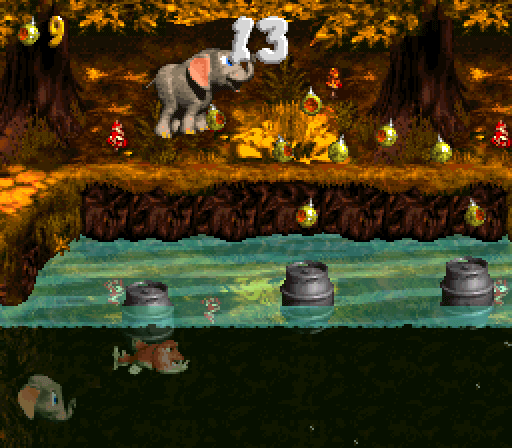
Krack-Shot Kroc
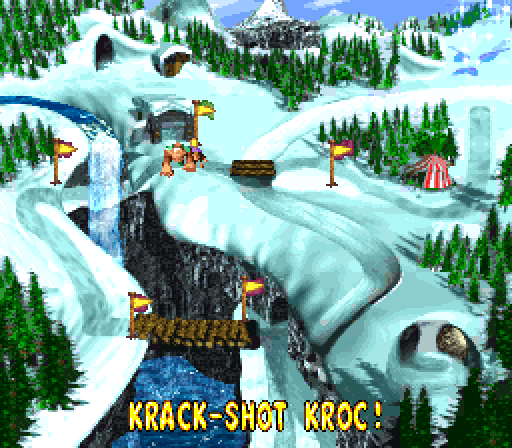
View an interactive map courtesy o’ DKC Atlas
This level finds the best balance DKC3 e’er has ’tween a gimmick that feels fresh, but doesn’t feel like it puts you into a different game, but with less polished controls ( like, say, “Rocket Rush” ). On the surface, this is just a normal, somewhat repetitve level where you play as Squitter & use web platforms to cross o’er boiling pots o’… ¿Pepto-Bismol? while dodging Zingers & Re-Koils. Howe’er, thruout this level there is a reticle chasing you, which stops every few seconds to charge up & shot & then shoots 1 o’ the fireballs that the owls in “Fire-Ball Frenzy” shoot where its reticle has stopped. These shots are so telegraphed, with such a delay after they stop to shoot, that it’s easy to dodge the shots, but the player will still likely want to stay ’head o’ the reticle, giving the player something o’ an urgency to keep moving forward, which thankfully, for once, DKC3 obliged with a level layout that ne’er forces the player to wait. Also, this isn’t an autoscroller, so there’s ne’er a time when you’re forced to wait round.
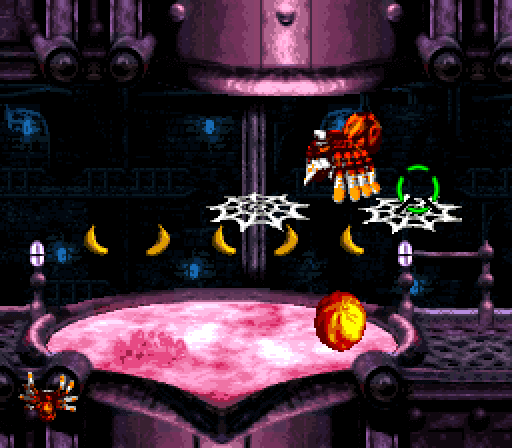
This level’s shape is similar to a lot o’ other levels’ in that it snakes in 1 direction, with only 1 small branch where there’s a bonus barrel. Howe’er, this being a level that encourages you the keep going, making you explore branching paths would only slow you down & be annoying while constantly dodging shots fired @ you, so it works better here than in other, mo’ slow-paced levels. Also, while this level is as long as most levels, the fact that you’ll be usually trying to keep moving makes it feel like it goes by faster than most, the reverse o’ the problem e’en DKC2 levels had ( “Castle Crush” being a prime offender ) o’ having levels feel too long ’cause they were slow & didn’t have their length readjusted. Since DKC levels tend to be on the long side, anyway, here it feels like a +.
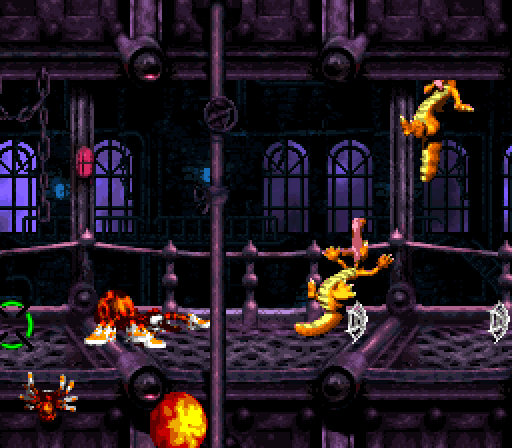
That bonuses are ’bove average, too. The 1st bonus barrel is in a surprisingly hard to find thin niche in the ceiling o’ some seemingly random part in the middle o’ the level. But while it’s hard to find, it’s perfectly fair, without resorting to using move-thru walls, which DKC3’s otherwise superior predecessor succumbed to, including in 1 o’ its strongest levels, “Bramble Scramble”. The 2nd bonus barrel isn’t nearly as well hidden, but it does require somewhat tricky maneuvering round a red Zinger while still dodging the reticle’s bullets.
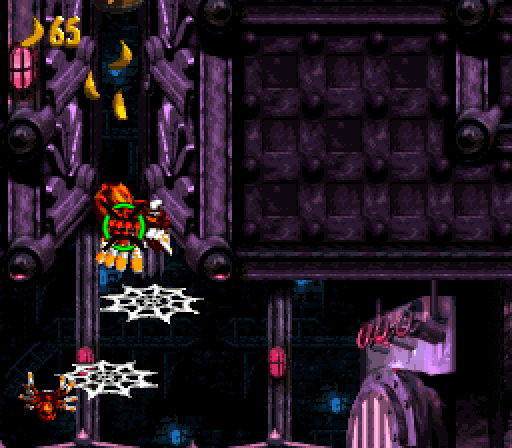
The 1st barrel’s challenge is all right: you have to collect appearing & disappearing presents using Squitter & use Squitter’s web platforms the reach the higher presents — tho a clever player will realize they can just put a web in the middle o’ the area & always be able to reach a present no matter where it appears. Part o’ me’s kind o’ disappointed they didn’t have you collect presents while dodging the reticle’s shots, like they did with the owl shots in “Fire-Ball Frenzy”, which would’ve been mo’ challenging than just using Squitter’s web, but it also would’ve been mo’ predictable, & maybe it’s good to give the reticle gimmick a break.
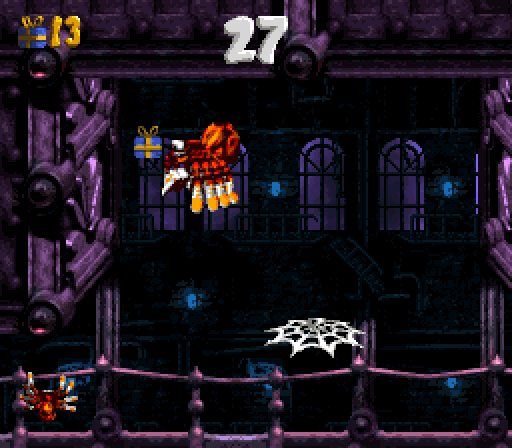
But the 2nd bonus’s challenge is the best challenge in the entire game: in an entirely new mechanic, you control the reticle & shoot fireballs @ enemies, desroying them all to reveal the bonus coin, which you also have to shoot a fireball @ to collect. In a game where bonuses fall into either extreme o’ having a bonus that has no relevance to the level or is just the predictable level’s gimmick, but also collecting presents or ornaments, this twist on the gimmick both feels like it fits this level perfectly & feels fresh.
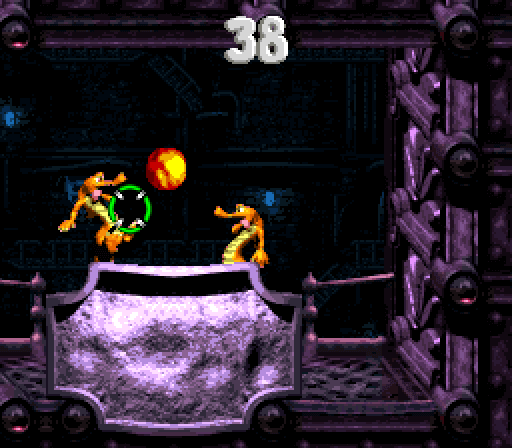
That said, Koin’s placement & “puzzle” is lame: he’s right in plain sight, just on the other side o’ the Squitter end sign, & he has a wall right ’hind him. The only “challenge” is that you only get 1 steel keg, so if you somehow mess it up, you have to replay the whole level, which is mo’ an annoyance than an interesting challenge. This is specially disappointing as there’s an obvious better puzzle: make Koin die to fireballs & make it so you have to lead the reticle to aim @ Koin & shoot him.
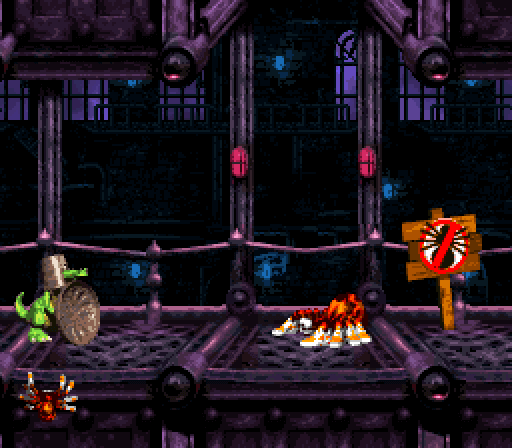
The other quibble I have with this level is that it is a bit too repetitive & generic, what with all the verticle sections with Zingers, horizontal sections with Re-Koils & Bristles, & the multiple vats o’ boiling bubble gum you have to cross, with a red Zinger here or there to block your way — specially when most o’ the time they weren’t blocking your way, allowing you to just create platforms way ’bove them & cross without any true danger. I’m sure they could’ve come up with a few mo’ variations, such as having Re-Koils o’er the vat sections. I don’t know if they couldn’t handle having mo’ enemy types than these, but it seems like other levels have a greater variety o’ enemies. If ’twas technically feasible, it would’ve been interesting to see how this level’s gimmick might play while battling gainst, say, Bazukas, or, hell, have you dodge fireballs from the reticle while also dodging fireballs from the owls.
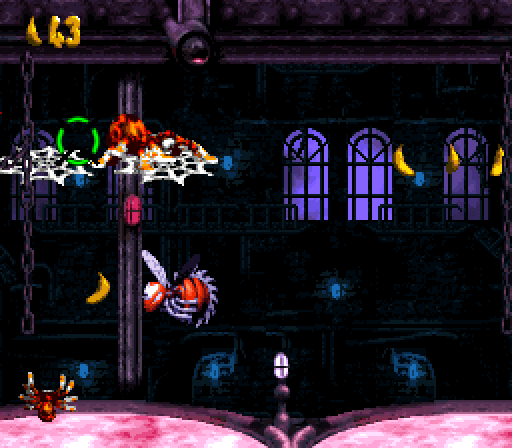
Also, if it wasn’t clear ’nough yet, I like this level’s weird palette. While the previous 2 factory levels have predictable vats o’ red lava & green acid, I love seeing vats o’ mysterious pink substances in this level, bordered by purple walls, which hopefully does some work toward rehabilitating that color after Quawks & “Poisonous Pipeline” has made it look so bad.

